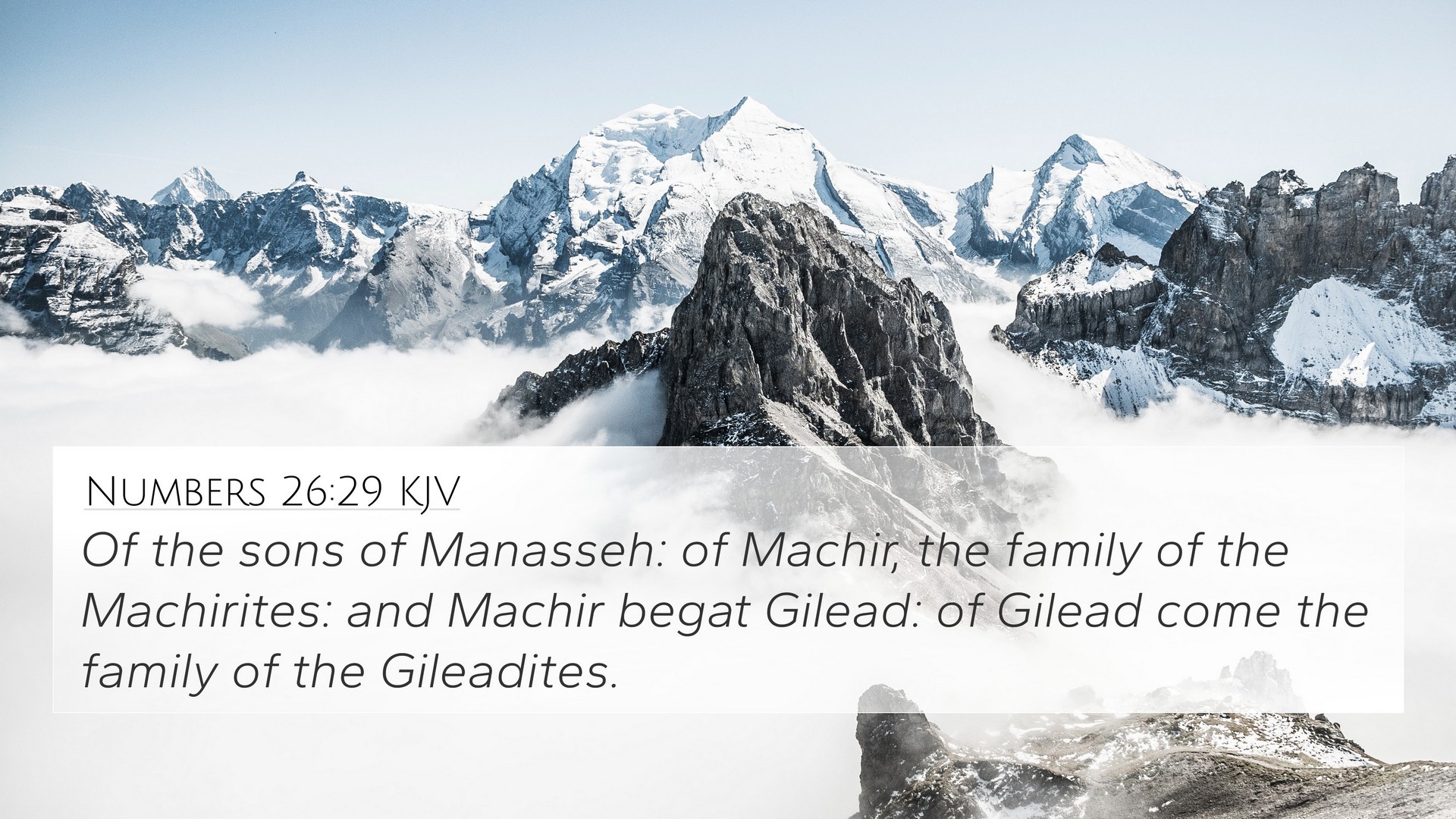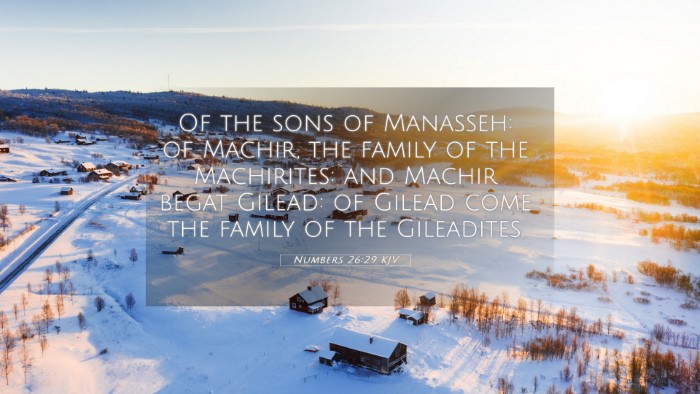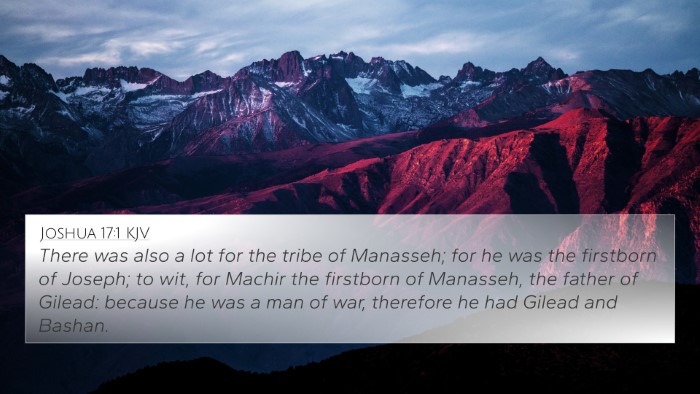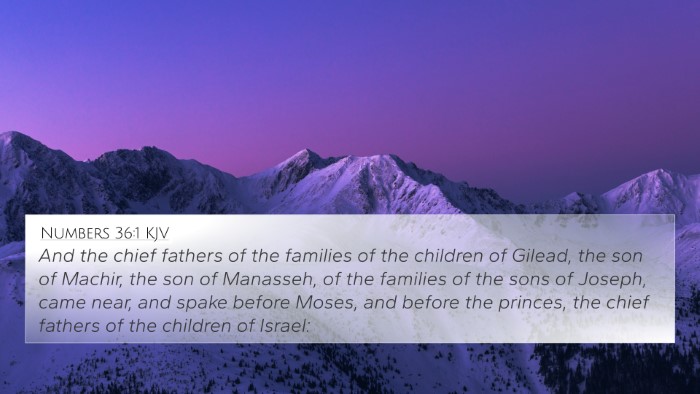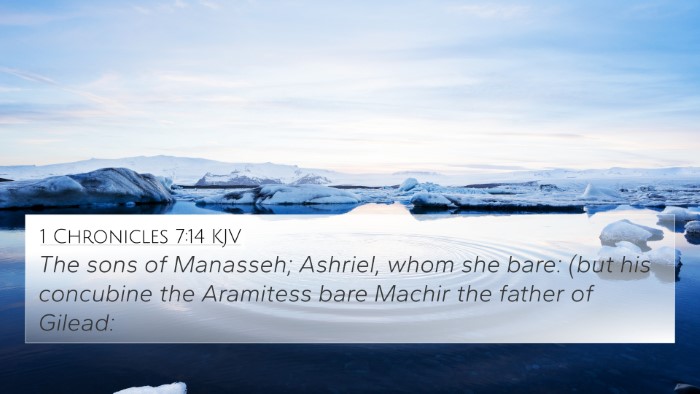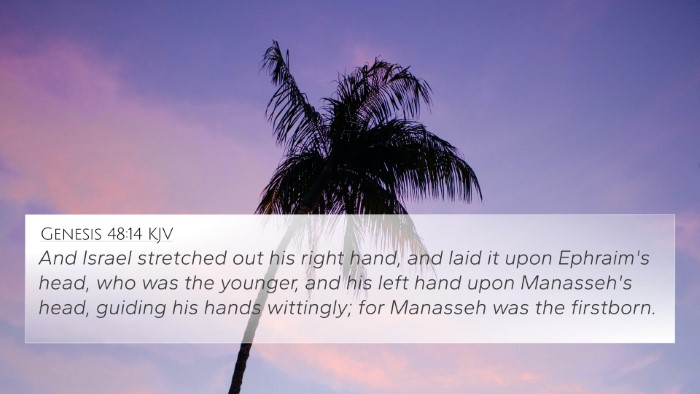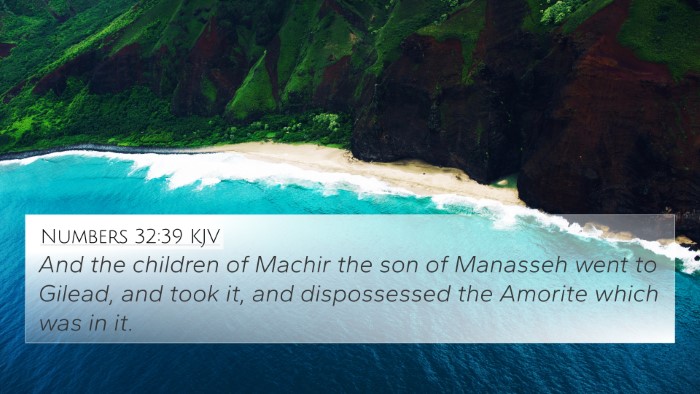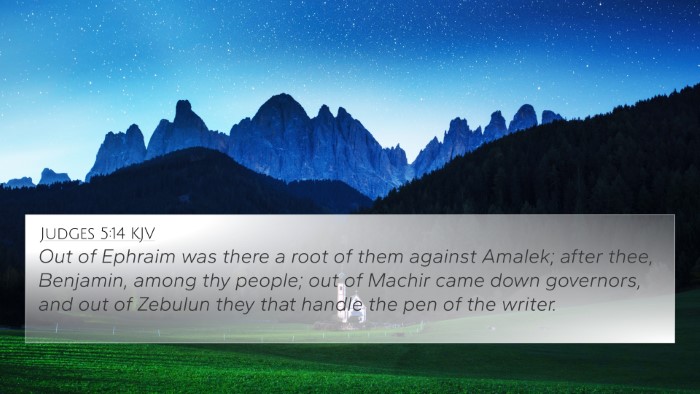Understanding Numbers 26:29
Numbers 26:29 refers to the descendants of Joseph, specifically the lineage of Manasseh. This verse is a part of the tribal census conducted as the Israelites prepared to enter the Promised Land. Let’s delve into the meaning of this verse by incorporating insights from several public domain commentaries, including those by Matthew Henry, Albert Barnes, and Adam Clarke.
Verse Breakdown
The verse reads:
"And the name of the daughter of Manasseh was Maachah: these are the names of the families of Manasseh." (Numbers 26:29)
Commentary Insights
-
Matthew Henry:
Henry emphasizes the significance of Maachah, noting that she is mentioned to highlight the importance of women in genealogy and the roles they play in the development of tribes. This inclusion serves to affirm God’s promise to Israel that He recognizes all members of the community.
-
Albert Barnes:
Barnes discusses the tribal divisions and the importance of lineage. He points out that naming the family heads and their descendant highlights the continuity of the tribes and God’s faithfulness in preserving His people through generations.
-
Adam Clarke:
Clarke elaborates on the significance of family names, noting that such identification is crucial for understanding the inheritance and rights of each tribe. He connects this practice to broader biblical themes of identity and heritage.
Thematic Bible Verse Connections
Numbers 26:29 relates thematically to several other verses in the Bible that explore lineage, identity, and God’s covenant with His people. Here are some notable cross-references:
- Genesis 48:1-5: Joseph’s blessing of his sons offers insight into the inheritance of the tribes.
- Exodus 6:20: The lineage of Moses and Aaron, emphasizing the importance of family in Israelite history.
- Joshua 17:1: Further details on the territory given to the tribe of Manasseh.
- 1 Chronicles 5:23: The expansion of the tribe of Manasseh and its influence.
- Luke 3:23-38: The genealogy of Jesus Christ, linking His lineage back to Old Testament figures.
- Romans 11:1-5: Paul discusses the remnant of Israel, thus connecting to the preservation theme in Numbers.
- Revelation 7:6-8: The sealing of the 144,000 from the tribes of Israel, including Manasseh.
Connections Between Bible Verses
The identification of Maachah serves as a bridge to understanding structural lineage and the fulfillment of God’s promises throughout the narrative of Israel. Notably, it opens up cross-references and connections that highlight how the New Testament reflects upon Old Testament themes:
- Matthew 1:2-16: Shows the fulfillment of God’s promises through Jesus's lineage.
- Hebrews 7:14: Mentions Jesus descending from the tribe of Judah, connecting back to covenant themes.
- Galatians 3:29: All who belong to Christ are considered Abraham’s seed, reflecting ongoing legitimacy through lineage.
Scriptural Cross-Referencing
Understanding how Numbers 26:29 fits into the broader narrative can be aided by a comprehensive Bible cross-reference guide. By engaging in a comparative Bible verse analysis, one can steadily build the inter-Biblical dialogue that reveals layered meanings throughout scripture:
- Explore a Bible concordance to find related scriptures.
- Use a Bible cross-reference system to draw parallels.
- Employ cross-referencing Bible study methods to deepen understanding.
Conclusion
In summary, Numbers 26:29 highlights the intricate connections within Israel's history and lineage, emphasizing the importance of genealogy in biblical narrative. Cross-referencing this verse with related scriptures enriches one’s understanding of the Bible as an interconnected text. By employing tools for Bible cross-referencing, readers can uncover profound truths and explore the continuity of God’s people throughout history.
Whether you are preparing a sermon or seeking personal enrichment, the exploration of these links can illuminate the rich tapestry of the scripture, offering new insights into both the Old and New Testament.
